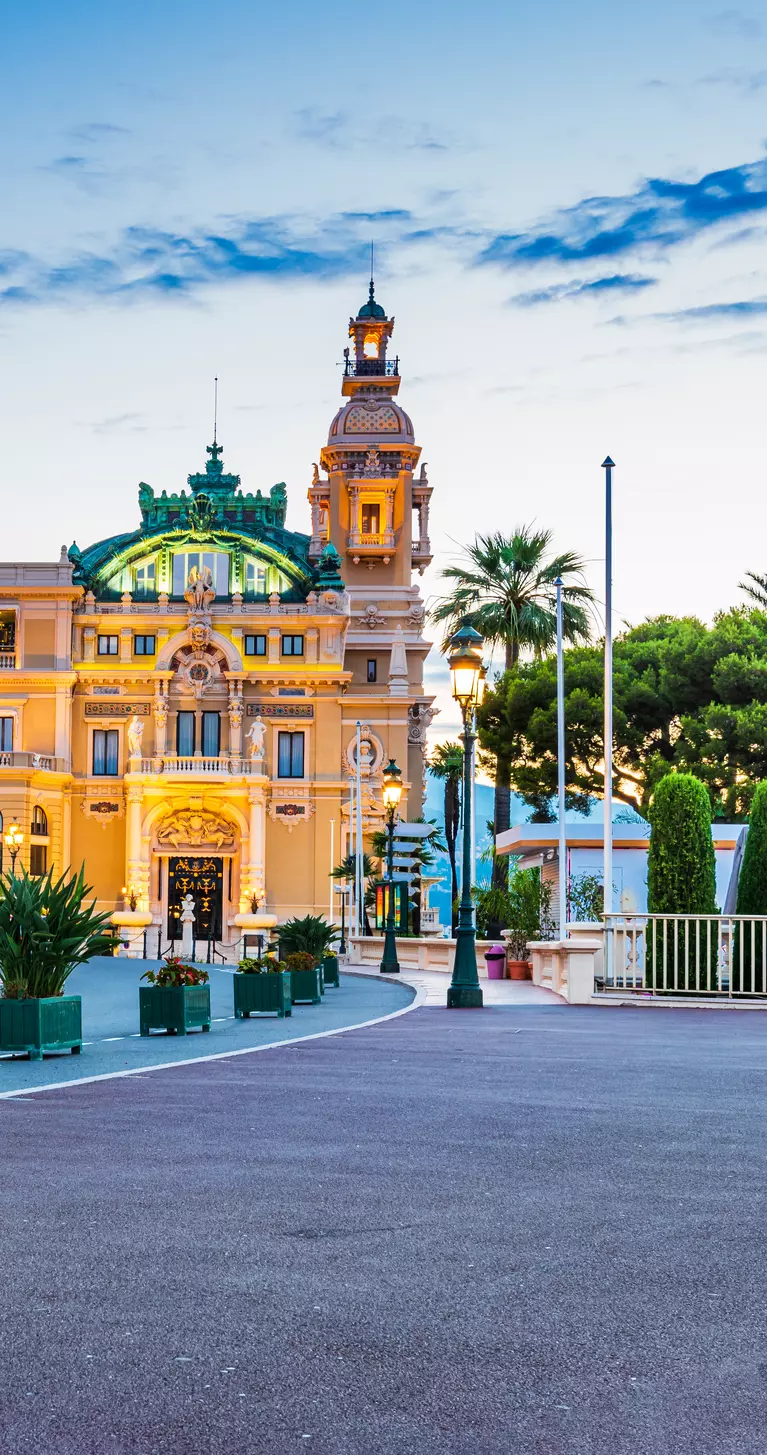For short trips (up to 90 days in any 180), US and Canadian passport-holders don’t need a visa. You’ll enter Monaco via France (Schengen), so the usual Schengen rules apply. Make sure your passport meets validity rules (Canada advises at least 3 months beyond your planned Schengen departure; some carriers and US guidance suggest 6 months—check your airline). From 12 Oct 2025, Europe’s new Entry/Exit System (EES) introduces fingerprint/face scans at Schengen borders; ETIAS travel authorisation is slated for late 2026. If you plan to stay longer than 90 days, different rules apply.
Discover Tailor-Made Monaco Vacations
Discover Monaco’s glamour, Mediterranean coastlines, and royal heritage in style.
Monaco combines French Riviera elegance with Mediterranean charm. From Monte Carlo’s casinos and luxury yachts to the Prince’s Palace and Oceanographic Museum, this tiny principality offers travellers culture, beauty, and sophistication.
Featured Highlights
- Experience Monte Carlo’s world-famous casino and glamour
- Watch the Monaco Grand Prix roar through city streets
- Visit the Prince’s Palace and daily changing of the guard
- Explore the Oceanographic Museum and marine life exhibits
- Stroll Mediterranean gardens and coastal cliff paths
- Enjoy fine dining, luxury shopping, and Riviera views
What do Goway's travellers say?

Get to know Monaco before you go.
Best Time to Visit
Monaco may be the world’s second-smallest country, but its calendar overflows with events that shimmer with glamour, history, and spectacle. From high-octane races to elegant soirées, each season offers travellers a chance to experience the principality’s unique blend of sport, culture, and luxury.
The Monaco Grand Prix, held each May, is the crown jewel of the Formula 1 circuit. Since 1929, its winding Monte Carlo streets have hosted the slowest yet most technical race of the F1 season, where precision matters more than speed. The event is as much about elegant parties and celebrity sightings as it is about the roar of engines.
Summer brings the Mediterranean to life. Larvotto Beach, Monaco’s only public stretch of sand, offers sunbathing, water sports, and a lively promenade of cafés and restaurants, best enjoyed from June to September. Meanwhile, July and August light up with the International Fireworks Competition, where countries compete with dazzling pyrotechnics choreographed to music.
September sees Port Hercules transform during the Monaco Yacht Show, drawing 30,000 visitors to admire cutting-edge yachts, marine innovations, and sustainable seafaring designs. For auto enthusiasts, January marks the Monte Carlo Rally, part of the World Rally Championship, famed for its alpine stages and unpredictable conditions before culminating in Monaco’s glamour.
Culture takes centre stage at the International Circus Festival, also in January, where acrobats, clowns, and daring stunts honour a tradition founded in 1974, still overseen by Princess Stéphanie. Equally iconic is the Rose Ball, held each March or April. Conceived in 1954, this charity gala dazzles with themed décor, live music, and the presence of royalty and celebrities, all in support of the Princess Grace Foundation.
In Monaco, every month offers an extraordinary spectacle, blending athleticism, artistry, and timeless elegance.
Frequently Asked Questions
Do I need a visa or special permits to enter Monaco?
What language is spoken locally? How widely is English understood in Monaco?
French is the official language. You’ll also hear Italian and Monégasque (a Ligurian dialect), and English is widely used in tourism, hotels, and many shops. A simple “bonjour/bonsoir” goes a long way when you start a conversation.
What are the must-see attractions in Monaco?
Start on the Rock (Monaco-Ville) for the Prince’s Palace and sweeping harbour views, then duck into the Oceanographic Museum—part aquarium, part cliff-top palace—with hands-on exhibits and colourful tanks. Wander to the Cathedral and the quiet lanes of the Old Town, then continue to the Japanese Garden and Larvotto Beach for a swim. In Monte-Carlo, peek into the Casino (ID and attire rules apply; the gaming rooms are smart-attire). Note: the Jardin Exotique has been closed for renovations and is expected to reopen around late 2025—check status before you go. If you want day trips, Goway packages often pair Monaco with Nice, Èze, and the French Riviera.
Is Monaco safe? What should I keep in mind while travelling there?
It’s very safe with a heavy police presence and cameras everywhere. Petty theft can occur in crowded spots and on regional trains to/from Nice—keep phones and bags zipped, especially around stations. As in France, be aware of strikes or demonstrations that may affect transport. Carry ID (needed for the Casino), and follow local rules on attire in public areas.
What’s the best way to travel within Monaco?
Walk—distances are short—but expect hills. Public lifts, escalators and travelators help flatten climbs (there are dozens across the principality). The CAM bus network (and a fun solar “bateau-bus” across Port Hercule) covers all the main sights; buy tickets or passes via the Monapass app or at stops. Taxis are limited; many visitors arrive/leave by train from Nice.
What Monaco cultural customs should I be aware of?
Dress neatly away from the beach—being shirtless or barefoot in town can earn a fine. In the Casino’s gaming rooms, smart attire is expected and you’ll need photo ID to enter. Tipping: service is included by law; rounding up or leaving a few euros for great service is appreciated but not required. Always greet with “bonjour/bonsoir” before jumping into English.
What should I wear/pack for Monaco’s climate?
Mediterranean weather means warm, sunny summers and mild, wetter winters. Pack breathable layers, a light jacket for breezy evenings, good walking shoes for polished stone paths, and a cover-up to go from beach to street. Winter needs a compact rain jacket and closed shoes. For dining and the Casino, smart-casual works (no beachwear, flip-flops or gym gear in gaming rooms). Bring a Type E/F plug adapter (230V, 50Hz); most phone/laptop chargers are dual-voltage. Sunscreen, a hat, and a small daybag keep you comfortable on long strolls.
Unlock more by subscribing to our newsletter
With our newsletter, you’ll get access to regular communications that inspire you and help you explore the world your way